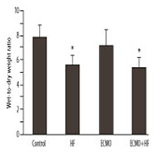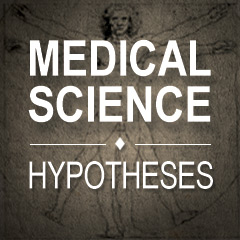Extracorporeal Membrane Oxygenation Combined with Hemofiltration in a Canine Lung Injury Model
Chen Shujing, Chun Li, Jing Li, Jinjun Jiang
Med Sci Hypotheses 2016; 3:19-24
DOI: 10.12659/MSH.902058
Available online: 2016-11-30
Published: 2016-11-30

BACKGROUND:
Extracorporeal membrane oxygenation (ECMO) has not been found to reduce the mortality in RCT studies of ARDS. The aim of the present study was to assess a combination of ECMO and HF as a therapeutic intervention to improve oxygenation without increasing plasma concentration of cytokines.
MATERIAL AND METHODS:
After an oleic acid-induced lung injury mode of canine was built, 28 dogs were randomized into 4 groups: controls, hemofiltration (HF), ECMO, and ECMO with HF (ECMO+HF). All parameters were measured immediately before randomization (time 0) and at 6, 12, and 24 h later.
RESULTS:
After 6, 12, and 24 h, IL-6 and IL-8 were significantly lower in HF and ECMO+HF groups than in controls. In HF and ECMO+HF groups, PAP was lower than in controls. Simultaneously, CO increased towards baseline values in HF and ECMO+HF groups, while it continued to fall in control and ECMO groups. The pulmonary vascular resistance index was much lower in HF and ECMO+HF groups than in control and ECMO groups. Compared to controls, the wet-to-dry weight ratio was similar in the ECMO group but lower in HF and ECMO+HF groups.
CONCLUSIONS:
In a canine model of lung injury, treatment with ECMO and hemofiltration effectively removed plasma proinflammatory mediators, improved hemodynamics and lung function, and reduced pulmonary edema.
Keywords: acute lung injury, Cytokines, Extracorporeal Membrane Oxygenation, Hemofiltration
